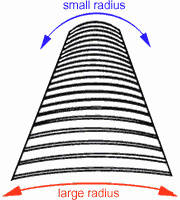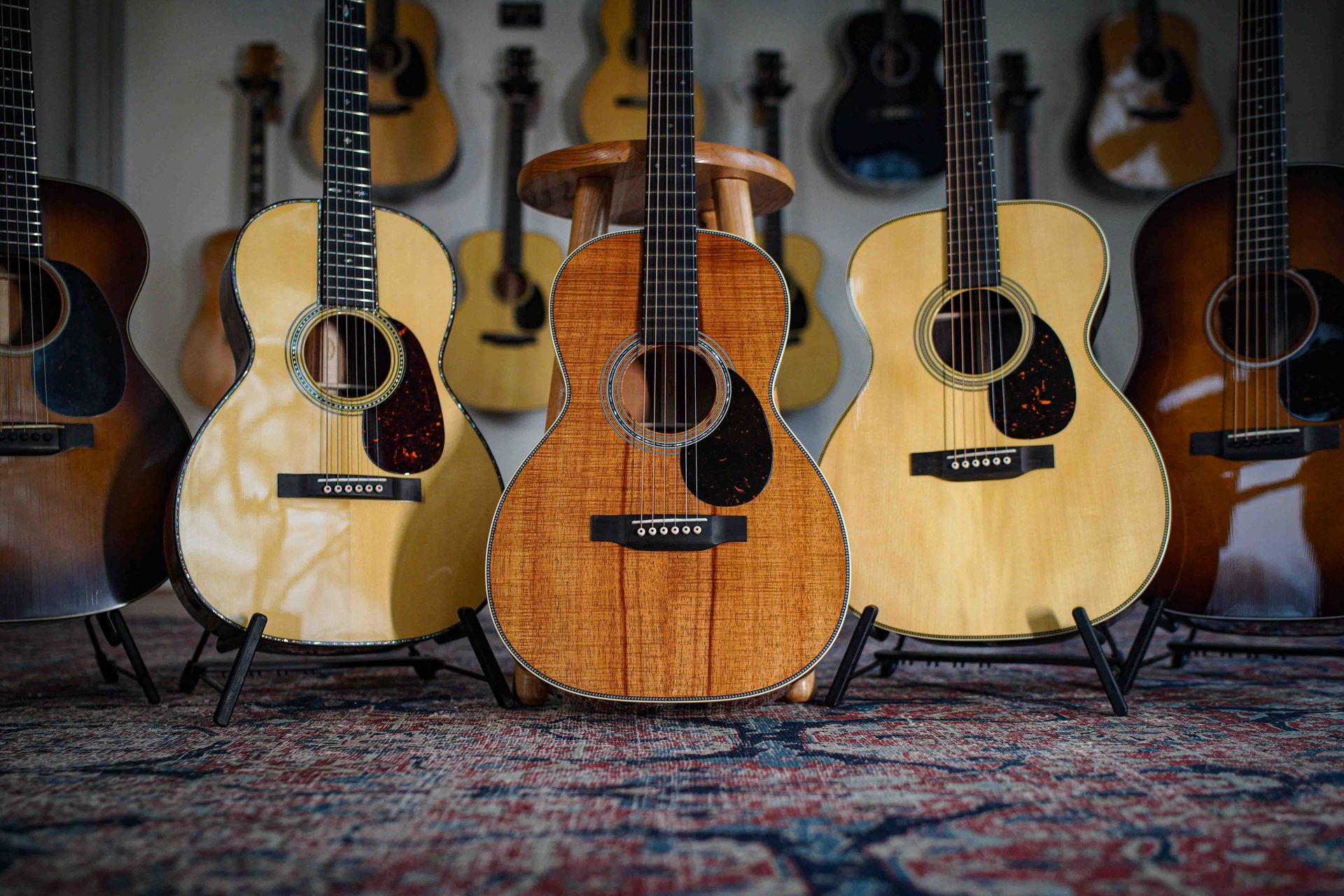What is fretboard radius?
At first glance a fretboard or fingerboard, may seem completely flat, but if you look closely, you can see that there is usually a slight curve in it. A cross-section of the neck, as seen in the picture above, shows this more clearly.
The main reason for this slight curve or: radius is playability: it makes playing bar chords a lot easier, because you don't have to push so hard.
Which fretboard radius suits me?
Which radius suits you best, may differ. A lot depends on your playing style and some people switch easily between them, depending on what they need from a guitar. A general guideline is: the more of a curve the fretboard has, the more suitable it is for chords. Flattening the fretboard makes it more suitable for solo work.
The way this curve is determined is called the radius and at first it may seem somewhat illogical because it is derived from the length of the radius of the circle that is used, usually in inches. The lower the number, the smaller the circle and the bigger the curve, as you can see in the drawing below.

Many electric guitars have a fretboard radius of 9.5 inches, which is a good "middle size" that appeals to many players and is pretty much the standard now with Fender Stratocasters and Telecasters. But we also see a lot of guitarists who actually prefer the more vintage feel of a slightly thicker neck, with a rounder fretboard with a 7.25-inch radius. Many Fender Custom Shop guitars are ordered with these dimensions and also the guitars of Kauffmann often have a 7.25-inch radius. Just because it feels so good.
On the other side of the spectrum, Gibson Les Paul often have a 12-inch radius, which gives you a somewhat flatter fingerboard. That may require a bit more when playing chords, but you get "space" in solo work in return. And there is much more to choose from, for example PRS again sits very nicely between Fender and Gibson with a 10-inch radius on some models. Are you a shredder who goes for lightning-fast soloing? Ibanez has guitars with a radius of 17 inches and above.
Acoustic guitars generally have a somewhat flatter fingerboards, Martin and many other brands often opt for a 16-inch radius, for example. Gibson also offers a J45 with a 12-inch radius. Do you play a lot of electric and want to switch easily to an acoustic guitar? Then a slightly rounder fretboard (i.e. with a lower number) can help with that.
Do you want to learn solo-lines on an acoustic guitar, but find yourself struggling with your current model? Then a different radius can help. The fretboard of classic guitars for example, is almost flat, while crossover models offer you something between a completely flat and slightly rounded fretboard. Some guitarists love that.

What is compound radius?
With a compound radius, the radius of the fretboard changes as you get higher on the neck. At the first position the fretboard is more curved, making it suitable for chords and the closer you get to the body, the flatter the fretboard becomes for faster and easier solo-ing, giving you something like a '10-14 inch' radius.
This set up offers the best of both worlds and makes these guitars great all rounders. Brands like Haar Guitars often have a compound radius. Collings gives some of their acoustic guitars a compound radius for the ultimate playing comfort..
Want to know more?
Which radius suits you best is mainly a matter of trying it out. You can always contact us via email, chat and telephone. Our Fellows are happy to help you!
Looking for your ideal acoustic guitar?
We help you step by step in our Acoustic Guitar Buying Guide.
